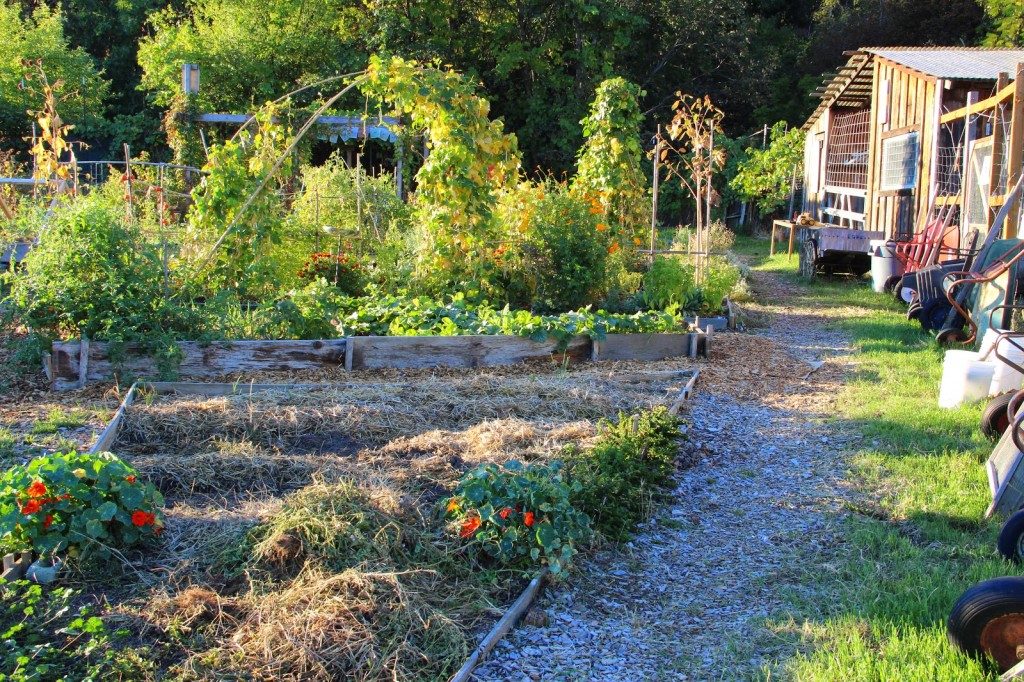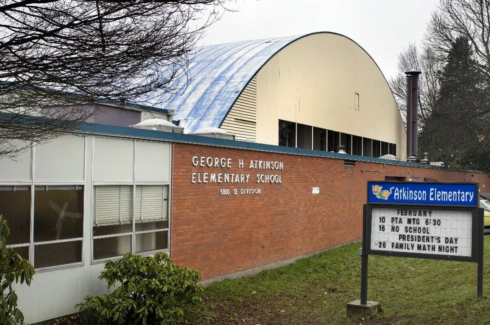Just up the hill from the Mountain Street/Siskiyou Boulevard intersection on the right-hand side is a large parking lot, open to the bustling activities of students and faculty during the day, populated by students and weekly concert attendees at night. To the average motorist it may seem like just another parking lot, and it is. But it’s what’s behind the parking lot, across a tiny dirt road, over a small ditch, into another dirt parking lot, and up a path to a gate where lies a hidden little gem—an emerald. The ECOS community garden.
Founded over ten years ago, the garden is home to a myriad of florae and their humanoid cultivators and insect friends. Communal agriculture has lost much of its tradition in today’s fast-paced juggernaut of the future, but the age-old practices are vibrant and alive here at ECOS and as prevalent as the flowers, herbs, and ornamentals bursting out of the walls—were there any walls. The feeling of community and of biodiversity is thick in the air here, and if you are near the compost processing area, then you’ll probably smell that, too. With over seventy individual and communal plots, the garden is a local epicenter of sustainable horticultural, landscape design, and even apiary studies.
Enter the gates of the garden if you are not a deer (the gates are impenetrable to deer) and you’ll exit reeking of the gardening knowledge that abounds. Students from the Ecology and Sustainability Resource Center on campus help to coordinate the ECOS garden, which is funded largely by student fees, though much of the maintenance is accomplished by the many volunteers whom have been drawn to the space. The garden also currently employs two part-time staff members.
“Our current purpose is to provide a nurturing place for students and community members to practice sustainable, organic growing methods while contributing to the education and food security of our community,” says Phoenix Barrow, an ECOS coordinator and Environmental Studies major at SOU. “Sustainability is very important to me. My favorite thing about managing the garden is being able to engage with students while providing a place for people to explore sustainable growth. It is nice to see people actively participating within their community with a smile on their face.”
Many other organizations within the community have formed partnerships with ECOS and keep plots here, as well. Central Medford High school makes use of the garden’s resources to enhance their education, the Civic Engagement program at SOU keeps two plots to grow fresh produce for the SOU food pantry, and the Native American Student Union tends a plot of Bear Grass—a staple craft material of Northwest tribes.
For the present and future of organic gardening, Barrow and his coordinators are excited.
“The recent boom in sustainable, small-scale gardening among the younger generation is incredible,” says Will Gearen, a garden co-coordinator. “With environmental change and our current land-management practices, it is vital that we take action to procure food stability.”
Gearen continued, “I enjoy learning and teaching about sustainable growing techniques in a hands-on environment. ”
Students and community members are encouraged to come see the garden for themselves. There are often spaces available if you are interested in getting involved or if a botanical respite is just what your hectic day needs. Just remember to be respectful: don’t harvest from any plot unless permitted by the plot-holder, and always close the gate behind you.
The basic fees for keeping a plot are to cover annual water costs based on plot size, and members are required to contribute four hours per month to the overall health of the garden, in addition to maintaining the pathways surrounding their plot.
Barrow urges community members to get involved directly: “Locally, the best action you can take is to grow your own food, compost, or buy local. Not only is growing local and organic sustainable, but it is healthy, as well.”



